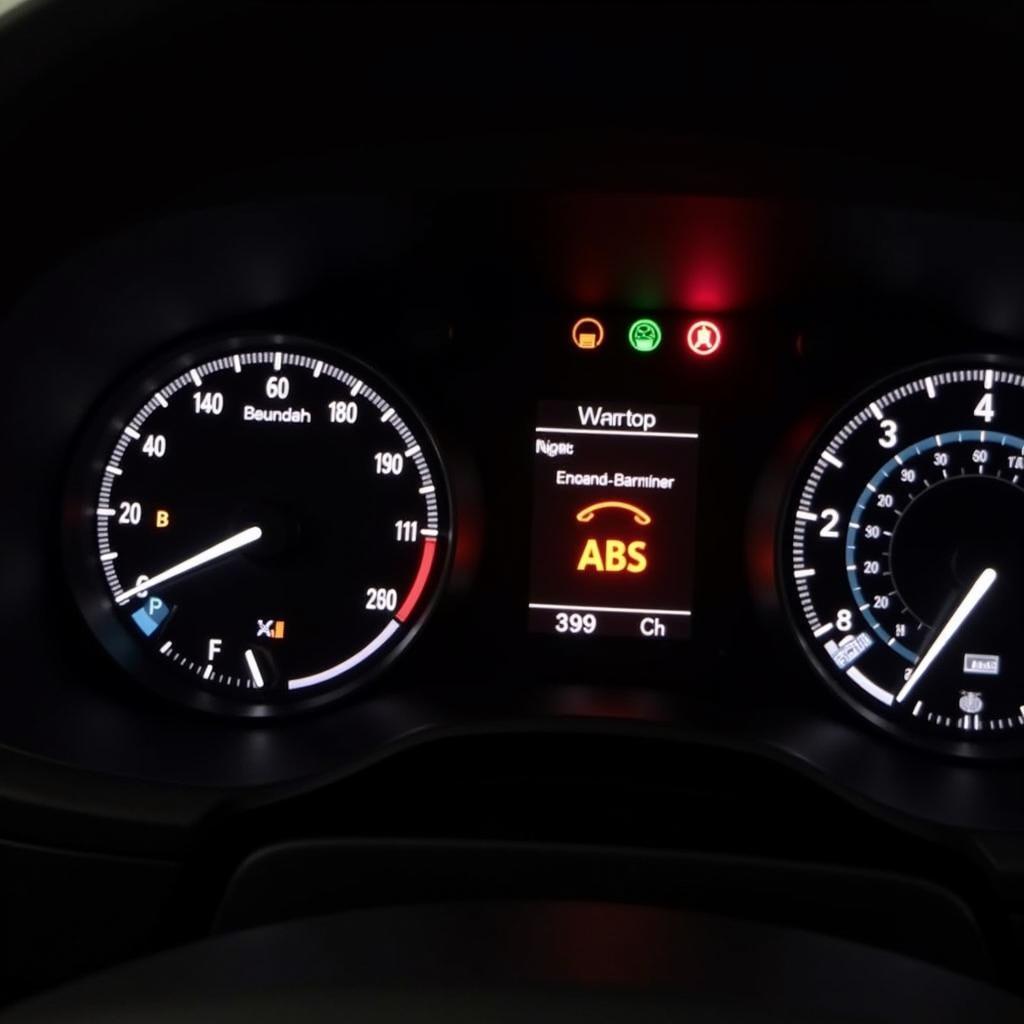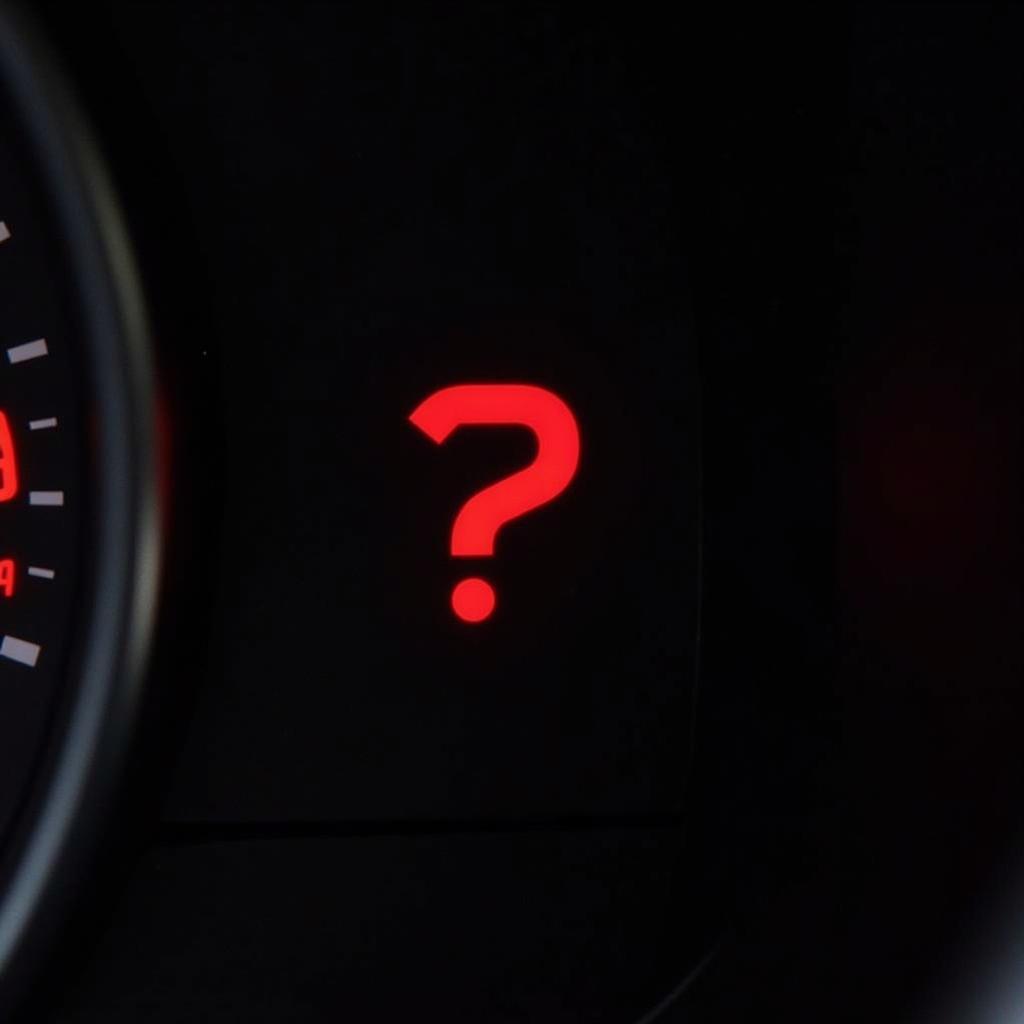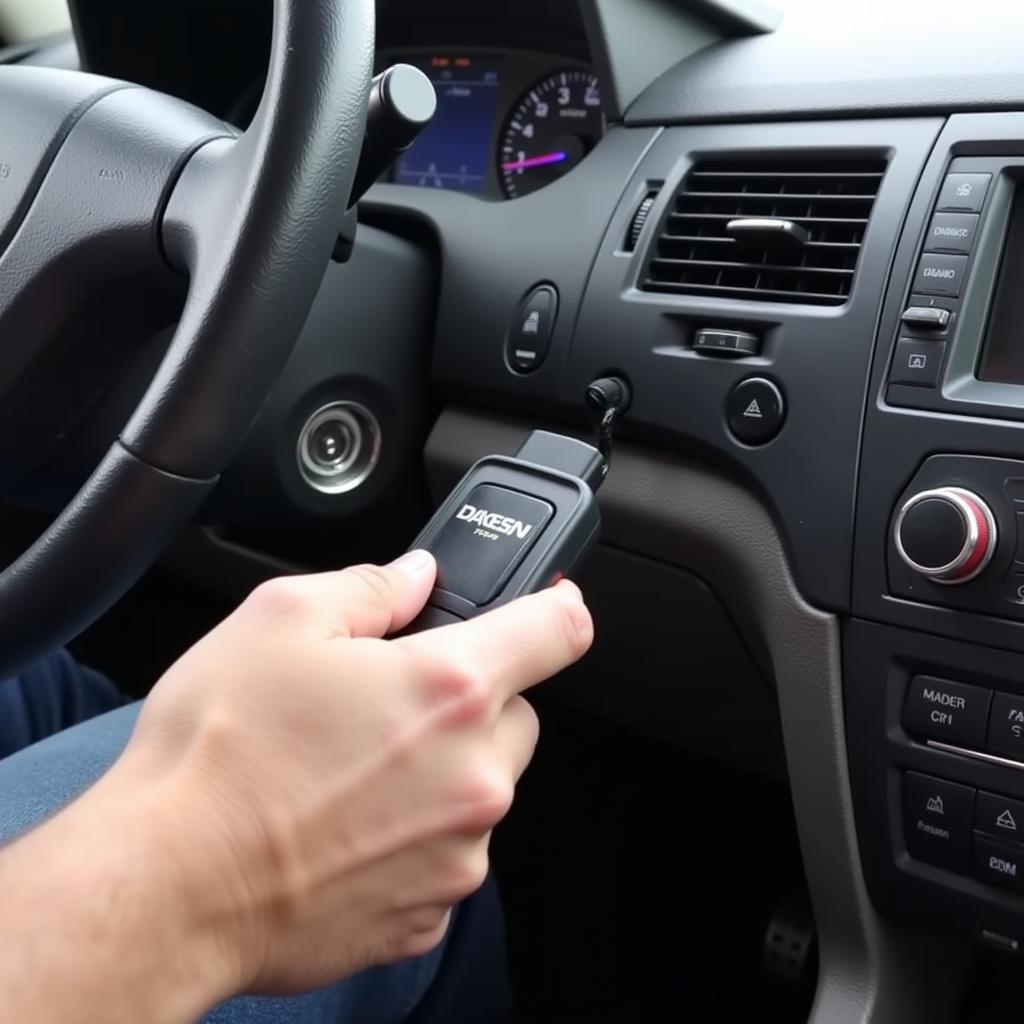Understanding your Seat Leon’s dashboard warning lights is crucial for maintaining its health and addressing potential issues promptly. These lights serve as your car’s communication system, alerting you to anything from minor maintenance needs to serious malfunctions. Ignoring them can lead to costly repairs and even dangerous driving situations. Let’s delve into the common warning lights you might encounter and what they signify.
 Seat Leon Dashboard Warning Lights Overview
Seat Leon Dashboard Warning Lights Overview
Common Seat Leon Dashboard Warning Lights and Their Meanings
The array of symbols illuminating your dashboard can seem daunting, but understanding their meaning is simpler than you think. Each light corresponds to a specific system within your car.
Engine Management Light
This light, often depicted as an engine outline, signals a problem within the engine management system. It could range from a loose gas cap to a more severe issue like a faulty sensor. If this light illuminates, it’s best to have it checked by a qualified technician. Sometimes, a simple fix like checking if a battery is dead can resolve the issue. check if a battery is dead
Anti-lock Braking System (ABS) Warning Light
The ABS light, usually a circle enclosing the letters “ABS,” indicates a problem with your anti-lock braking system. While your car can still brake without ABS, this feature is crucial for maintaining control during hard braking, especially on slippery surfaces.
Airbag Warning Light
This light, typically depicting a person with a deployed airbag, warns of a potential issue with the airbag system. A malfunctioning airbag system can be dangerous in a collision. Immediate attention is required. Understanding the signs of a low battery in your car is important, as a weak battery can sometimes cause erratic behavior in electronic systems. sign of low battery in car
 Seat Leon Brake Warning Light
Seat Leon Brake Warning Light
What to Do When a Warning Light Appears
Seeing a warning light on your dashboard can be concerning, but staying calm and taking the right steps is essential.
- Consult your owner’s manual: Your Seat Leon’s manual provides a comprehensive guide to all the warning lights and their meanings.
- Assess the urgency: Some lights indicate immediate action, while others allow for a less urgent response.
- Seek professional help: If you’re unsure about the meaning of a light or the severity of the issue, it’s best to consult a qualified technician. Especially when dealing with a dead battery situation, knowing how to jump start it can be incredibly helpful. jumping a very dead battery
Diagnosing the Problem Remotely
Advancements in automotive technology now allow for remote diagnostics and software installations. These services can identify the root cause of the issue and sometimes even resolve it without a physical visit to the workshop.
“Remote diagnostics have revolutionized the way we approach car repairs,” says John Smith, Senior Automotive Diagnostic Technician at CarDiagTech. “It saves time and money for the customer while allowing for quicker issue resolution.”
Preventing Future Warning Lights
Regular maintenance is key to preventing dashboard warning lights. Adhering to your Seat Leon’s recommended service schedule can significantly reduce the likelihood of unexpected issues. For example, knowing how to start a dead battery car can prevent future issues and save you the hassle of being stranded. starting a dead battery car
“Preventative maintenance is like investing in your car’s long-term health,” says Jane Doe, Lead Automotive Engineer at Auto Solutions. “Regular checks and timely repairs can save you from costly headaches down the line.” Understanding specific scenarios, like how to deal with a dead battery in a 2016 Lincoln MKX, can also equip you with valuable knowledge. 2016 lincoln mkx dead battery
Conclusion
Understanding your Seat Leon dashboard warning lights empowers you to address potential problems proactively. By staying informed and taking appropriate action, you can ensure the longevity and safety of your vehicle. Don’t ignore those illuminated symbols – they are your car’s way of communicating its needs.


